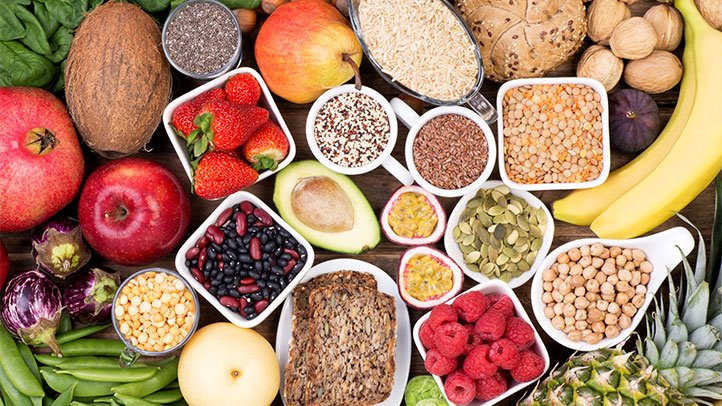When we talk about important macronutrients, our mind often flicks straight to making sure we’re eating the right of carbohydrates, fats, and protein. But what about fibre? Here’s everything you need to know.
What is it?
Fibre is found in the indigestible parts of plant foods, such as fruit, vegetables, grains, beans, and legumes. It is an important macronutrient that aids in regular laxation and reducing the risk of chronic disease. One common myth is that we only need one type of fibre to satiate our body’s needs. However, there are actually three types of fibre; which all have different functions and health benefits:
- Soluble
- Insoluble
- Resistant Starch
Soluble fibre helps us feel fuller while lowering cholesterol, stabilising our blood glucose levels, and slowing down digestion. This helps prevent quick spikes in Soluble fibre is found in fruits, vegetables, oats, barley, and legumes.
Insoluble fibre is found in wholegrain breads and cereals, nuts, seeds, wheat bran and the skin of fruits and vegetables. This type of fibre absorbs water, helping soften the contents of our bowels to support regular bowel movements.
Resistant starch is slightly different as it is digested in the large intestine where it can improve bowel health by assisting in the production of good bacteria. Resistant starch is found in undercooked pasta, underripe bananas, cooked and cooled potato and rice.
The majority of us get both types of fibre from food and supplements. You can get the nutrients from fruits, vegetables, nuts, beans, and grains. Most nutritionists advise to get fibre from wholefoods because they’re healthy in other ways as well. If you can’t get enough fibre from your diet, fibre supplements can help fill in the gap.
Research shows that a high fibre diet can:
- Keep us feeling fuller for longer, reducing hunger feelings
- Keep bowels healthy and regular
- Help lower cholesterol levels
- Help manage blood sugar levels
- Help prevent some forms of cancer
Am I eating enough of it?
According to Nutrition Australia, males over 18 years old should be aiming to eat 30g of fibre each day, while females should be aiming for 25g.
While it can be tedious to track the amount of fibre you’re eating each day, some signs that you may not be getting your fix are bloating, constipation, a sugar high followed by a crash, constant hunger and high cholesterol or blood pressure.
If you are interested in tracking your fibre consumption, food tracking app “My Fitness Pal” is a handy tool that allows you to enter the food you’ve eaten and provides you with a full run down of the macronutrient content in the food.
High Fibre Foods
How can you get more fibre into your diet? Just a few simple swaps and upping your intake of plant foods every day will help you increase your fibre intake. Fire and foremost, making sure you are having the recommended 2 serves of fruit and 5 serves of vegetables each day is a great place to start. Incorporating 4-6 serves of grains, preferably high fibre or wholegrain, and 1 serve of nuts and legumes will also help you get over the line.
There are a few tips and tricks you can implement to increase your daily fibre intake, including:
- Avoiding peeling the skin of fruits and vegetables
- Choose wholegrain bread in preference to white
- Choose wholemeal pasta and brown rice
- Choose fruit as a snack or dessert
- Choose whole fruit instead of fruit juice
- Eat breakfast – studies show that people who skip breakfast find it difficult to meet their fibre requirements
- Add nuts, seeds, or LSA to your breakfast cereals and smoothies
- Add legumes to soups, salads, casseroles, and dips T
- Top salads and soups with sunflower seeds or psyllium husk
The good news is that by simply trying to incorporate more fibre into your diet, you will naturally improve your diet overall. The foods which are high in fibre also come with a whole heap of other essential micronutrients. Win win!
As always, if you have any serious concerns related to nutrition and diet, it is important to consult your healthcare professional for advice.




